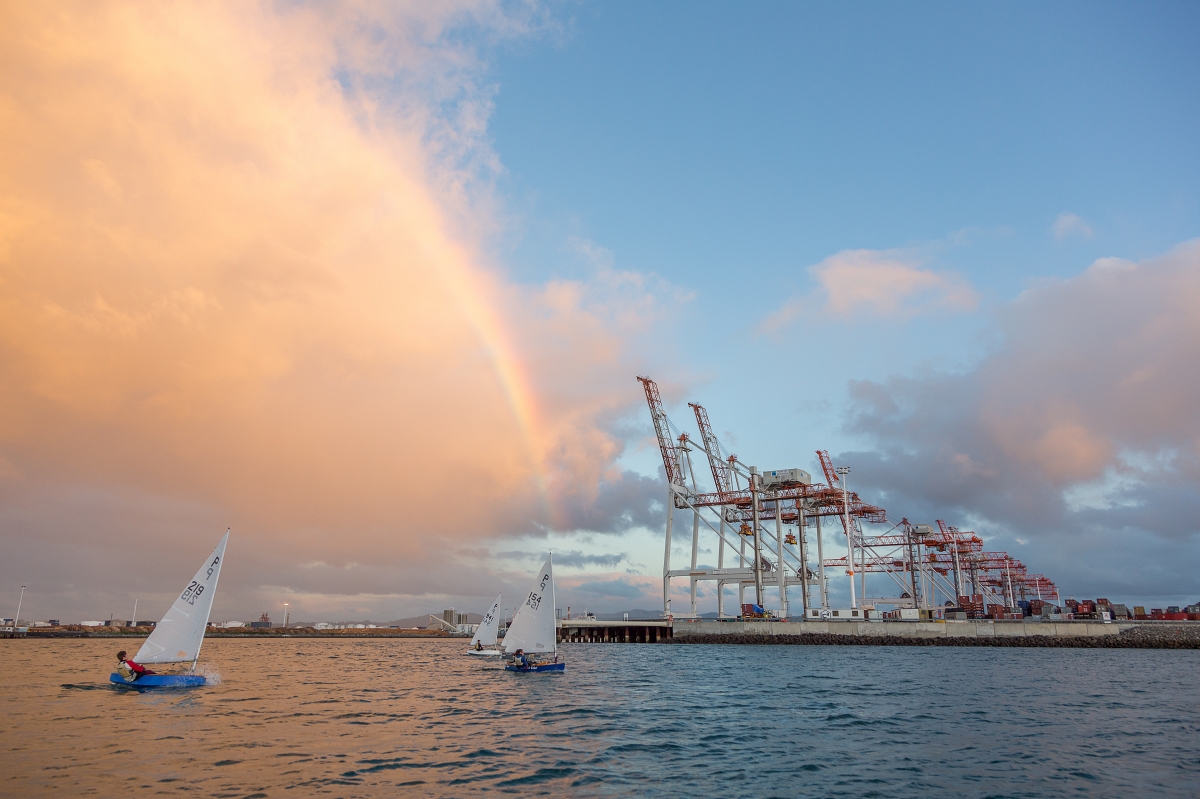
The Bay of Plenty is home to New Zealand’s largest international freight hub, the Port of Tauranga. The port is the country’s main gateway for export logs, dairy products and kiwifruit and operates New Zealand’s largest container terminal.

Chief Executive Officer,
Port of Tauranga
Port of Tauranga offers importers and exporters a lower carbon emission supply chain for shipping their goods to and from international markets, through its ability to accommodate the largest container vessels to visit New Zealand.
In the six years to 2016, Port of Tauranga invested heavily in capacity expansion for larger vessels, including deepening and widening shipping channels and expanding cargo storage and handling facilities.
Bigger ships have higher fuel efficiency and produce fewer emissions per container and, especially when combined with rail, offer a significantly lower carbon supply chain over a typical container journey.
Port of Tauranga now has its next stage of investment under way.
The port intends to extend its container wharves by converting existing port land into an additional berth. Plans for the extension include measures to monitor and mitigate any impacts on the flora and fauna of Te Awanui Tauranga Harbour, including native birds, marine mammals and kaimoana.
As part of its decarbonisation strategy, Port of Tauranga also plans to introduce fully-electric automated stacking cranes to increase the number of containers that can be stored and handled on site.
Port of Tauranga Chief Executive, Leonard Sampson, says automated stacking cranes can produce around 75% fewer emissions than a traditional diesel-fuelled operation.

The automated operation will be linked by rail to Port of Tauranga’s new inland port near central Hamilton. The Ruakura Inland Port has been developed in partnership with Tainui Group Holdings (TGH).
The 30-hectare inland port is part of TGH’s new Ruakura Superhub freight and logistics complex.
The port chooses energy efficient equipment where possible, including choosing electric or hybrid vehicles and equipment whenever possible. The port’s first hybrid straddle carriers, introduced in early 2020, have proven to be reliable, comfortable and about 25% more fuel efficient than older models.
Mr Sampson says as well as decarbonisation, air and water quality is a major focus.
“Our vision is to protect and enhance our natural environment, investing in technology and embedding sustainable practices throughout our business,” he said.
“Our approach has been to break down each area of operations to find opportunities to create lasting change.”
Our vision is to protect and enhance our natural environment, investing in technology and embedding sustainable practices throughout our business.
Port of Tauranga prevents air and water pollution through dust suppression, stormwater management and spill prevention. Water and sediment quality near the port is monitored regularly, as is air quality through more than a dozen monitors testing a range of parameters.
Port of Tauranga’s dust reduction programme has had a significant impact on air quality at the port. The port has installed additional wind break fences, increased wharf sweeping and improved cargo handling procedures to minimise fine dust becoming airborne from on-wharf activities such as bulk cargo and log handling.
Since 2017, wharf sweeping has increased five-fold, with much of the material collected recycled to avoid waste to landfill.
Meanwhile, Port of Tauranga supports industry efforts to reduce fumigation, while ensuring the port community is vigilant in detecting potential pest incursions that might threaten the Bay of Plenty way of life.
Port of Tauranga is listed on the New Zealand Stock Exchange, with around 54% of shares owned by the region’s ratepayers, through Bay of Plenty Regional Council’s investment arm, Quayside Holdings.
In the past decade, Port of Tauranga has returned to Quayside around $690 million in dividends from port profits. The council uses its dividends to subsidise rates bills, at the current rate of around $350 per household per year.
Port of Tauranga also directly sponsors a number of community-based projects and events across the region’s arts, sport, education and business sectors. They include the newly opened Port of Tauranga Rescue Centre, a regional hub for surf life saving activities. The port sponsors the Port of Tauranga National Jazz Festival and is a founding gold sponsor of the Tauranga Arts Festival.
NEW ZEALAND’S INTERNATIONAL CARGO GATEWAY AT TAURANGA
– KEY FACTS –
- The largest and most efficient port in New Zealand, handling 25.6 million tonnes of cargo in the year to June 2022
- Handles around 42 per cent of all shipping containers in New Zealand – more than 1.2 million 20ft equivalent units a year
- 190 hectares of land on both sides of Tauranga Harbour
- 2.8 km quay length with 15 berths
- 14.5 metres shipping channel depth
- Nine container cranes
- 1,369 ship visits in the year to June 2022.


